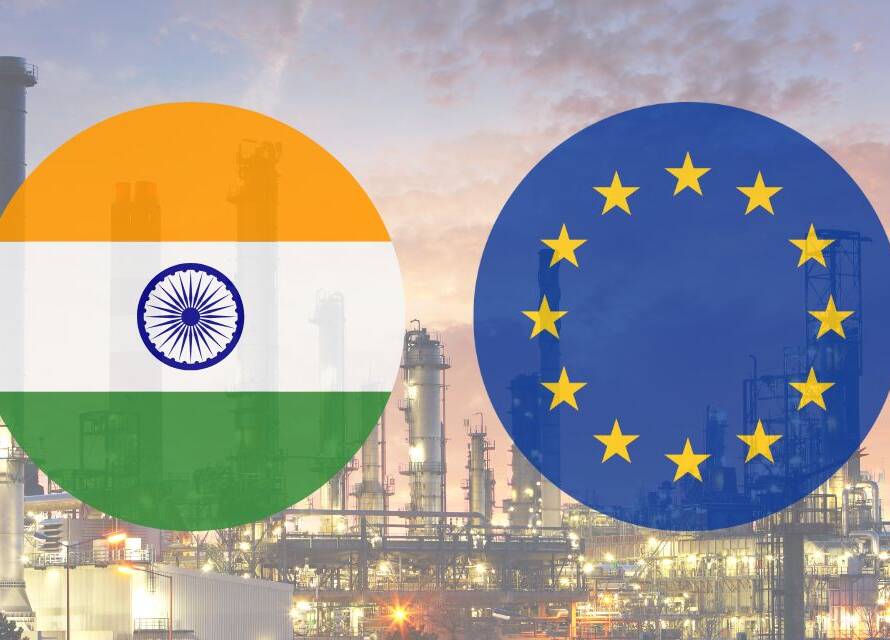As global attention shifts towards India due to evolving geopolitical dynamics, corporate leaders are increasingly adopting new approaches that balance cost competitiveness with risk resilience. U.S. corporations are eager to tap into the Indian consumer market, driven by market saturation in the U.S. and challenges faced in China, such as regulatory hurdles, the recent ban on TikTok, and the 100% duty on EVs from China.
The global supply chain landscape has shifted, with resilience now a key priority. Dual or diversified sourcing has become a guiding principle for companies looking to build more robust supply chains. For many, this has meant adopting a “China + 1” or “China + N” strategy—maintaining a presence in China while developing manufacturing capabilities in one or more additional countries. One country that stands out in this regard is India.
India’s Competitive Edge for Global Manufacturers
India presents a compelling alternative to China as a manufacturing hub, offering several significant advantages. The Indian manufacturing industry, which generated 16-17% of the country’s GDP pre-pandemic, is projected to be one of the fastest-growing sectors. In the fiscal year 2023, manufacturing exports reached an all-time high of $447.46 billion, a 6.03% increase from the previous year. This growth underscores India’s potential as a key player in global manufacturing.
One of India’s primary strengths lies in its vast labor market. Almost half of the population is of working age, and the manufacturing sector employs 20% of the workforce. This large pool of workers, combined with a lower wage structure, offers a competitive advantage for manufacturing companies. A 2022 global labor rate survey revealed that the average salary of production workers and machine operators in India is one-fifth of that in China and one-third of that in Vietnam.
The Indian government has also been proactive in supporting foreign manufacturers looking to diversify their supply chains to India. Between 2016 and 2023, India jumped from 130th to 63rd place on the World Bank’s Ease of Doing Business Index. The country has made notable progress in several parameters, including dealing with construction permits, trading across borders, resolving insolvency, and getting electricity. These improvements reflect a more business-friendly environment, making India an attractive destination for manufacturers.
According to a World Economic Forum report, India has also been working to transform its infrastructure landscape. In 2019, the Indian government launched the mega-scale National Infrastructure Pipeline (NIP) program, committing $1.8 trillion to more than 7,500 projects between 2020 and 2025. The projected outlay covers multiple sectors, including transport, energy, and water, which will improve infrastructure availability for manufacturers.
Managing Risks and Resources in Supply Chain Diversification
While the benefits of diversifying supply chains to India are clear, many manufacturers often face challenges in doing so due to limited resources. Smaller companies often lack the capital required to invest in new supply chain initiatives, including the costs associated with identifying, vetting, and establishing relationships with new suppliers. Limited resources also mean the manufacturers have less room for error, making them more vulnerable to potential disruptions during the transition process.
However, there are strategies that can help balance these challenges effectively:
-
- Prioritize Critical Components: Focus on diversifying suppliers for the most critical components that could disrupt production if unavailable. This targeted approach ensures that the most significant risks are mitigated without spreading resources too thin.
- Leverage Existing Relationships: Utilize established relationships with current suppliers to explore their networks and connections in other regions. This can open doors to new, reliable suppliers with minimal additional investment. For instance, a Chinese supplier specializing in electronic components might have Indian partners producing similar or complementary products.
- Incremental Implementation: Implement diversification gradually. Start with small-scale orders from new suppliers to test their reliability and quality before fully committing. This phased approach allows for adjustments without overwhelming resources.
- Collaborative Partnerships: Form strategic alliances with other small and medium-sized manufacturers to pool resources for supplier diversification. Industry associations and chambers of commerce often organize trade missions where multiple small and medium-sized enterprises travel together to meet suppliers. This not only reduces travel costs but also presents a united front, thereby strengthening their negotiating position.
- Government and Trade Support: Take advantage of government programs and trade associations that offer support and resources. These programs can provide valuable information, contacts, and even financial assistance. India has several export promotion councils, such as the Engineering Export Promotion Council (EEPC) and the Electronics and Computer Software Export Promotion Council (ESC). These councils assist foreign buyers in sourcing Indian products by providing market intelligence, organizing trade fairs, and facilitating business matchmaking.
In conclusion, India is well-positioned to benefit from the ongoing supply chain realignment efforts triggered by the pandemic and recent geopolitical disruptions. As one chief procurement officer noted in a survey about pandemic disruptions, “we learned that a fair amount of spare capacity in the system can be very beneficial when you are disrupted, and that is something we need to consider in our future supply chain design
As a U.S.-based company with 30 years of experience, Source Machining Specialties specializes in helping U.S. manufacturers with their manufacturing needs in India. We’re so confident in our Indian production facilities that we invite you to a site audit at our expense. Discover more about our capabilities and services, and let’s start a conversation.



